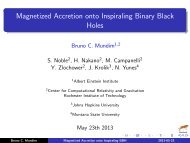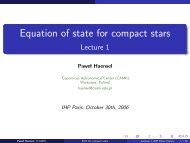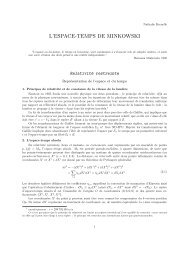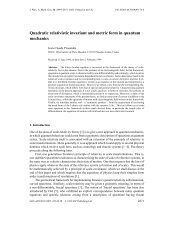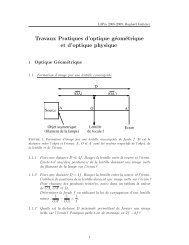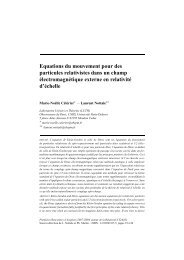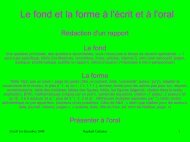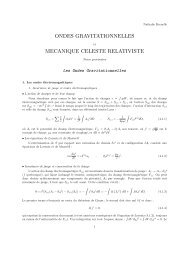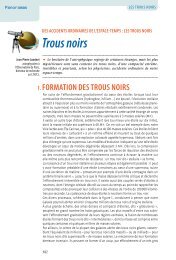Black holes trigger stars to self-destruct - LUTh - Observatoire de Paris
Black holes trigger stars to self-destruct - LUTh - Observatoire de Paris
Black holes trigger stars to self-destruct - LUTh - Observatoire de Paris
Create successful ePaper yourself
Turn your PDF publications into a flip-book with our unique Google optimized e-Paper software.
<strong>Black</strong> <strong>holes</strong> <strong>trigger</strong> <strong>stars</strong> <strong>to</strong> <strong>self</strong>-<strong><strong>de</strong>struct</strong> - space - 18 July 2007 - N... http://space.newscientist.com/article.ns?id=dn12294&print=true<br />
If <strong>stars</strong> disrupted near black <strong>holes</strong> really do explo<strong>de</strong>, then they could in principle allow these events <strong>to</strong> be<br />
<strong>de</strong>tected at a much earlier stage, says Jules Halpern of Columbia University in New York, US. "It may make it<br />
possible <strong>to</strong> see the disruption of that star immediately if it gets hot enough," he <strong>to</strong>ld New Scientist.<br />
Brassart agrees. "Perhaps it can be observed in the X-rays and gamma rays, but it's something that needs <strong>to</strong><br />
be more studied," he says.<br />
Supernova researcher Chris Fryer of the Los Alamos National Labora<strong>to</strong>ry in Los Alamos, New Mexico, US, says<br />
the <strong>de</strong>aths of these <strong>stars</strong> are difficult <strong>to</strong> simulate, and he is not sure whether the researchers have proven their<br />
case that they explo<strong>de</strong> in the process.<br />
But if these explosions do occur, future observa<strong>to</strong>ries, such as the Large Synoptic Survey Telescope (LSST),<br />
which will <strong>de</strong>tect large numbers of supernovae, could turn up some explosions of this type. "Then these objects<br />
may come in<strong>to</strong> the limelight," he <strong>to</strong>ld New Scientist.<br />
Related Articles<br />
For Milky Way's black hole, it's feast or famine<br />
http://www.newscientist.com/article.ns?id=dn10935<br />
11 January 2007<br />
<strong>Black</strong> hole seen <strong>de</strong>vouring star in best <strong>de</strong>tail yet<br />
http://www.newscientist.com/article.ns?id=dn10736<br />
07 December 2006<br />
Giant black hole caught <strong>de</strong>vouring star<br />
http://www.newscientist.com/article.ns?id=dn4699<br />
18 February 2004<br />
Weblinks<br />
Study abstract<br />
http://arxiv.org/abs/0707.2476<br />
Jules Halpern, Columbia University<br />
http://www.astro.columbia.edu/~jules/<br />
Chris Fryer, LANL<br />
http://qso.lanl.gov/people/fryer/in<strong>de</strong>x.html<br />
Close this window<br />
2 sur 2 14/03/08 15:05



